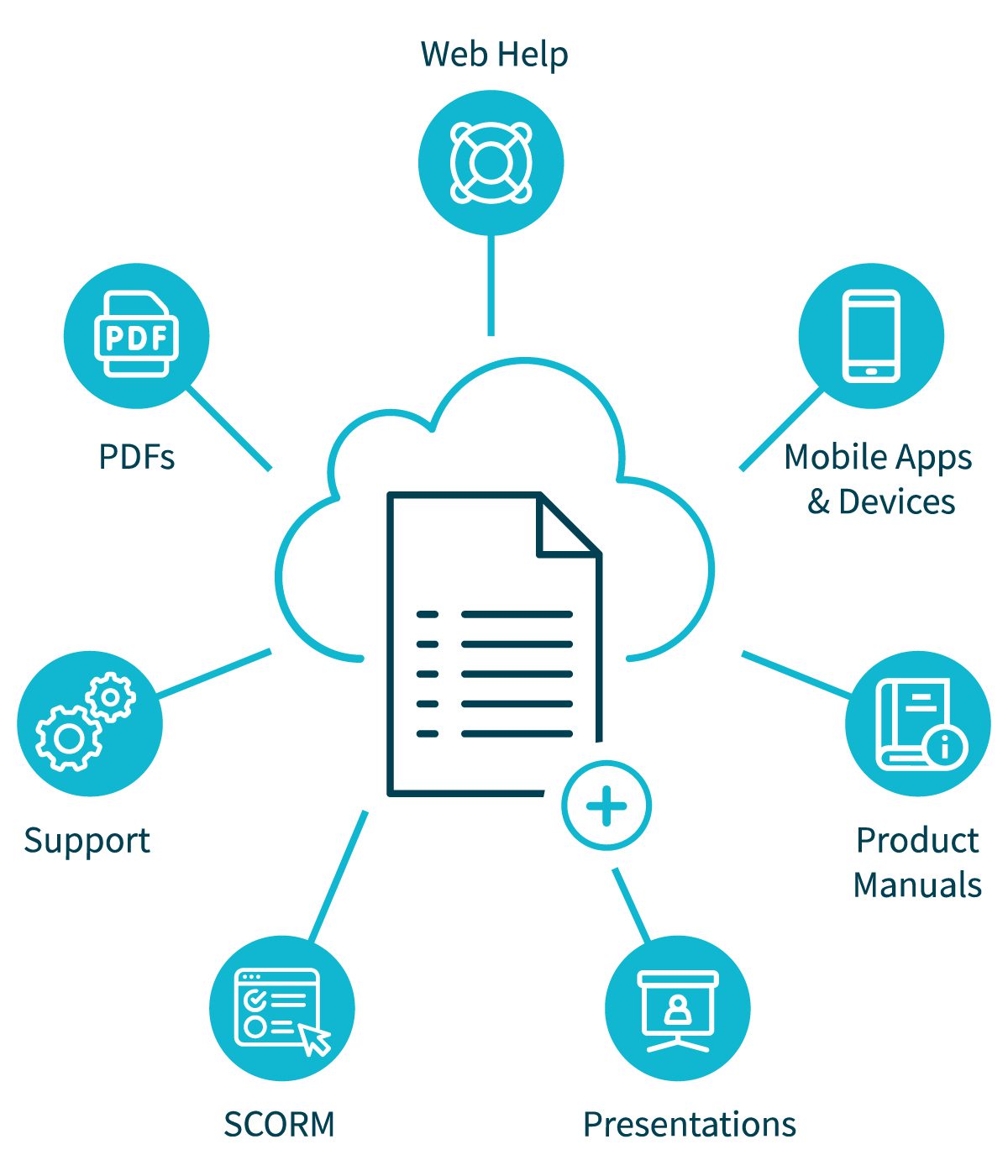8 benefits of using a component content management system for technical writers
As high quality content becomes more and more of a necessity for modern businesses, many organizations are making the leap from old-school, document-based content generation to a sophisticated component content management system (CCMS).
Storing content on a CCMS offers many benefits over traditional methods, including improved efficiency, quality control and lower costs for localization.
In this post, we’re going to cover the following topics:
What is a component content management system?
A component content management system (CCMS) is a relational database that automatically breaks down your documents into reusable components, which are kind of like Legos.
This approach to content creation is called component authoring. Writers using this technique can manage their content on a highly granular level, editing and moving components around as needed.
This level of granular control is what differentiates a CCMS from regular content management systems (CMS). A typical CMS manages content at the document level, which offers far less flexibility and reusability.


How a CCMS works
Once the CCMS has turned your documents into components, those smaller pieces can be moved around and edited independently of the surrounding content.
Imagine you work for a vehicle manufacturer and new safety regulations have just been introduced. As a result, one line in all of your user documentation has to be updated. Without a CCMS, you would have to make that adjustment manually to every single publication: PDFs, manuals, forms, web content, etc.
This old-school approach is time consuming and fraught with opportunities for errors.
Using a CCMS, all you would have to do is find that piece of outdated content in the system and change it once. The CCMS would then publish your update to all of the documents and other outputs in which that piece of content appears. Think of all that time and stress you’re saving!
CCMS Standards
Technical writers using a typical CCMS need to write their content in specific code-based languages called Standards. These allow the CCMS to catalog each piece of content accurately.
Some common Standards include:
- Darwin Information Typing Architecture (DITA)
- DocBook
- S1000D
- Shareable Content Object Reference Model (SCORM)
- Office Open XML
Learning how to create content using this type of coding language can be daunting, which is why Author-it offers a no-code option for beginners and non-technical collaborators. Writers can familiarize themselves with the concepts of component authoring without getting bogged down by confusing code.
Who uses a CCMS?
A CCMS is versatile and can be a great fit for organizations in any industry. These systems are particularly useful for businesses that:
Maintain complex knowledge bases
If your business’s data is being stored over multiple systems and isn’t easily accessible to everyone on your team, a CCMS can solve the issue by providing a single point of storage and organization.
Have multiple publication outputs
For businesses with many different departments publishing content, maintaining control over quality and accuracy can be a nightmare. Using a CCMS provides a single source of truth on any given topic so that everyone across the entire organization uses only the most on-brand and up-to-date information.
Already use large amounts of structured data
Organizations that regularly produce and maintain structured data will appreciate the immediate flexibility made possible in a CCMS. Intelligent platforms like Author-it will automatically integrate legacy content uploaded into its systems, even content written in DITA.
8 benefits of using a CCMS
Using a CCMS to create, manage and publish your content has a multitude of benefits. The top eight include:
1. Consistency and quality. Organizations using a single-source system like a CCMS have much greater control over their content, eliminating off-brand messaging and simple replication errors.
2. Easy collaboration across teams. A CCMS with central, user-friendly interfaces and no-code options like Author-it makes collaboration easy between technical writers, SMEs and other team members.
3. Greater speed to market: By reducing the amount of time needed to generate and update content, using a CCMS makes it much easier for content creators to keep up with deadlines.
4. Personalized user experiences at scale. Content creators can localize their content much more efficiently with a CCMS by customizing only small pieces of content while reusing the rest.
5. Lower translation costs. Component authoring reduces the cost of translation services, since only individual components need to be translated, instead of entire documents.
6. Multi-channel publishing. All-in-one CCMS platforms like Author-it will automate the formatting requirements for outputs such as PDF, web, presentations, manuals and more, making publication quick and painless.
7. Simplified regulatory and audit compliance. Organizations have much greater control over their documents with a CCMS, allowing for far fewer regulatory errors. Version tracking and histories also facilitate audit requests.
8. Future-proof content. New apps and publication systems are constantly being introduced, and using a CCMS ensures that your content remains flexible for any future outputs.


Get started with an all-in-one CCMS
If you’re ready to give a CCMS a try, it’s time to choose the right platform for your organization. Begin by asking yourself a few key questions:
- Do you know how to code, or would you prefer a no-code platform?
- Will you be publishing content to multiple formats, such as web, PDF and mobile?
- Will you be collaborating with subject matter experts and non-technical writers?
- Does your organization have pre-existing content in Word, web or legacy help systems?
- Will your content need to be translated into multiple languages?
As the original inventors of component authoring, the Author-it team has over 20 years’ experience catering to the ever-evolving needs of technical writers and the organizations they work for, prioritizing ease of use and content versatility.
Author-it provides support for automated translation plug-ins, multiple output formats, no-code collaboration between users, and legacy content integration.
To learn more about how working with a CCMS can improve your content creation, management and publication process, contact Author-it’s team of experts or request a demo.





